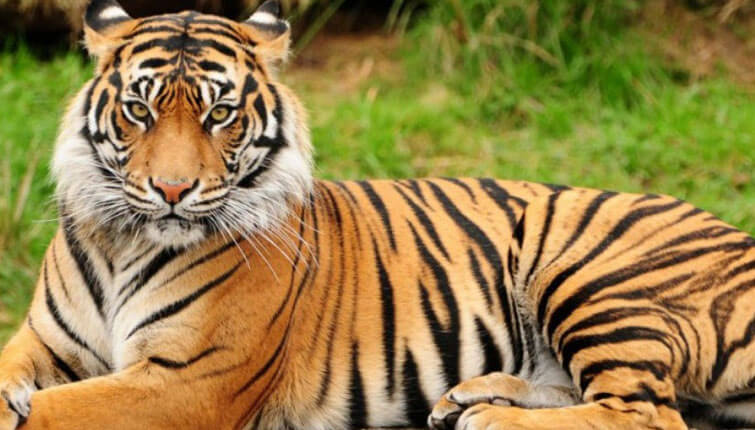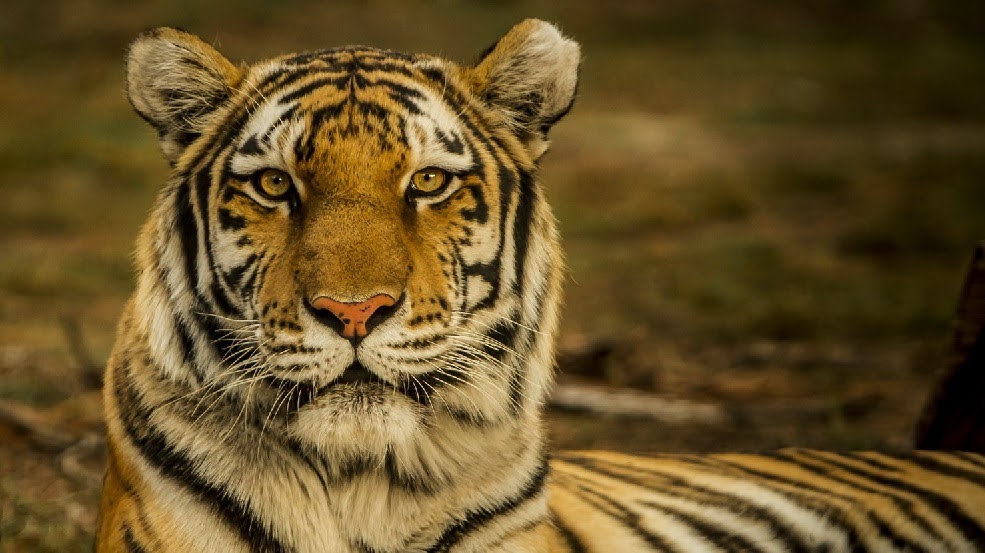- 1 Day Sundarban Tour
Pricing:
- ₹2799 per adult
- ₹1399 for children aged 4-8 years
- Free for children aged 1-4 years (under 48 months)
Facilities Included:
- Welcome Drink:
- Transportation: [Pick + Drop]
- Breakfast:
- Boat Safari:
- Lunch:
- Sightseeing:
- Guide Assistance:
- Snacks and Tea:
- Safety Measures:
- 1 Night 2 Days Sundarban Tour
Pricing:
- ₹4500 per adult (Non-AC room)
- ₹5000 per adult (AC room)
- ₹2250 for children aged 4-8 years
- Free for children aged 1-4 years (under 48 months)
Facilities Included:
- Welcome Drink
- Meals: All Times
- Boat Safari
- Accommodation: AC/ Non Ac
- Cultural Program:
- Visit Watchtowers and Local Attractions
- Safety
- Guided Tour
- Tea/Coffee Breaks
- 2 Night 3 Days Sundarban Tour
Pricing:
- ₹5500 per adult (Non-AC room)
- ₹6500 per adult (AC room)
- ₹2750 for children aged 4-8 years
- Free for children aged 1-4 years (under 48 months)
Facilities Included:
- Welcome Drink
- Meals: (breakfast, lunch, evening snacks, and dinner)
- Extended Boat Safaris: Multiple guided boat safaris
- Accommodation: in AC or non-AC rooms,
- Cultural Program:
- Visits to Key Attractions:
- Expert Guide:
- Tea/Coffee Breaks:
Sundarban 3 Days 2 Nights Package
Immerse in the wild beauty of Sundarbans with our 3 Days, 2 Nights adventure!
Book Sundarban 3 Days 2 Nights
Immerse in the wild beauty of Sundarbans with our 3 Days, 2 Nights adventure!
- 2 Night 3 Days Sundarban Boat Tour
Pricing:
- ₹5500 per adult (Non-AC room)
- ₹6500 per adult (AC room)
- ₹2750 for children aged 4-8 years
- Free for children aged 1-4 years (under 48 months)
Facilities Included:
- All Meals:
- Guided Boat Safaris:
- 2-Night Accommodation: Stay on the boat in comfortable AC or non-AC rooms.
- Cultural Performances:
- Attractions:
- Safety & Security:
Boat Sundarban 3 Days 2 Nights Package
Sail into the wild with our 3 Days, 2 Nights Sundarban Boat Adventure!
Sundarban 3 Days 2 Nights Package
Explore the untamed beauty of Sundarbans with a thrilling 3 Days, 2 Nights boat tour!
Why the Royal Bengal Tiger is the King of Sundarbans

Why the Royal Bengal Tiger is the King of Sundarbans: The Sundarbans, the largest mangrove forest in the world, is one of the most biodiverse regions on Earth. Its ecosystem, spread across the delta of the Ganges, Brahmaputra, and Meghna rivers, is home to a wide variety of species. But standing at the apex of this food chain, revered and feared, is the Royal Bengal Tiger. Known for its unmatched strength, resilience, and adaptability, the Royal Bengal Tiger (Panthera tigris tigris) is often referred to as the undisputed “King of the Sundarbans.”. Let’s dive deeper into Why the Royal Bengal Tiger is the King of Sundarbans.

Here’s why the Royal Bengal Tiger has earned this title and continues to reign supreme over this wild and unforgiving terrain.
Royal Bengal Tiger is the King of Sundarbans Important point
1. Apex Predator of the Sundarbans
At the top of the food chain, the Royal Bengal Tiger has no natural predators in the Sundarbans. This position of dominance gives it unparalleled control over the ecosystem, helping regulate the population of prey species such as deer, wild boars, and even other predators like jackals. Its role as an apex predator maintains the balance in the food web, ensuring no single species overpopulates and disrupts the equilibrium of the ecosystem. We can explore further details regarding Why the Royal Bengal Tiger is the King of Sundarbans.
This natural regulation is crucial for the health of the Sundarbans, as an imbalance could threaten not only other animals but the very survival of the mangroves themselves. Without tigers, herbivore populations would explode, leading to overgrazing and destruction of vital plant species, ultimately affecting the entire habitat.

Read More:
2. Adaptability to Harsh Conditions
The Sundarbans presents a challenging environment with its brackish waters, dense mangrove forests, and tidal shifts. However, the Royal Bengal Tiger has evolved unique adaptations to survive in this habitat. Unlike most tigers, which prefer dense forests or grasslands, the Sundarbans tigers are adept swimmers and are often seen swimming across the many rivers and creeks in the region. This adaptation is crucial as the tidal nature of the region means tigers must frequently cross waterways to hunt and patrol their territory.

These tigers have also developed larger paws to navigate the soft, muddy terrain of the mangrove forests. Additionally, they have adapted to a semi-aquatic lifestyle, enabling them to thrive in an area where many predators would struggle to survive. Also, you can Book the Sundarban Tour At Royal Sundarban Tourism and Sundarban Leisure Tourism Powered By Argusdna.
3. Territorial Dominance
Royal Bengal Tigers are highly territorial creatures, and their territories in the Sundarbans are often vast, covering anywhere from 20 to 30 square kilometers. Their strong territorial instincts are a reflection of their solitary nature and the need to control enough resources to sustain their survival.
To mark their dominance, tigers use scent markings and vocalizations. Their distinctive roar, which can be heard over long distances, signals their presence to other tigers and helps them maintain control over their territory. This control over such a large area reinforces their role as the apex predator, ensuring they have access to sufficient prey and resources. Let’s talk more about Why the Royal Bengal Tiger is the King of Sundarbans.

4. Fearsome Hunting Techniques
The Royal Bengal Tiger’s hunting techniques are finely tuned to the Sundarbans’ environment. The dense mangroves and murky waters make stalking prey difficult, but the tiger’s acute senses and camouflage allow it to remain undetected until the moment of attack. Tigers are known to ambush their prey, using the thick vegetation as cover before delivering a fatal blow with their powerful jaws or claws. We can elaborate further on Why the Royal Bengal Tiger is the King of Sundarbans.
Their diet in the Sundarbans includes spotted deer (chital), wild boar, and occasionally smaller animals like fish, crabs, and even monitor lizards. Their ability to adapt their hunting techniques to the available prey, coupled with their stealth and strength, makes them lethal predators, further cementing their status as the kings of the jungle.
5. Symbol of Power and Survival
Beyond their physical dominance, the Royal Bengal Tigers hold deep cultural and symbolic importance in the region. For centuries, they have been regarded as symbols of power, survival, and resilience by the local communities who live in and around the Sundarbans.
Historically, the relationship between humans and tigers in the Sundarbans has been fraught with tension and respect. Tigers occasionally stray into villages, leading to human-tiger conflicts, but they are still revered as divine creatures in many local beliefs. In Hindu mythology, the goddess Bonbibi, who is considered the protector of the Sundarbans, is believed to keep both humans and tigers in balance, ensuring their coexistence. We can continue our discussion on Why the Royal Bengal Tiger is the King of Sundarbans.

6. Stealth and Camouflage
The Royal Bengal Tiger’s orange coat with black stripes not only makes it a visually striking animal but also serves a practical purpose. The stripes act as camouflage, blending the tiger into the dense mangroves and dappled sunlight of the forest. This camouflage is vital for stalking prey in an environment where visibility is often limited.
The tiger’s stealth is equally formidable. Able to move silently through the undergrowth, it can sneak up on its prey undetected, closing in with a burst of speed that few animals can outrun. This combination of camouflage, stealth, and speed makes it a supreme hunter in the Sundarbans, earning it respect and fear from all other creatures in its domain.
7. Role in Ecosystem Balance
The Royal Bengal Tiger plays a pivotal role in maintaining the balance of the Sundarbans’ ecosystem. By controlling herbivore populations, particularly those of deer and boar, tigers prevent overgrazing of vegetation, which is essential for the survival of the mangrove forests. Without tigers, prey populations would skyrocket, leading to an imbalance that could cause long-term damage to the flora and fauna of the region. We can review additional information about Why the Royal Bengal Tiger is the King of Sundarbans.

Moreover, the presence of the tiger is a sign of a healthy ecosystem. The Sundarbans’ biodiversity relies on this apex predator to regulate the natural order and preserve the integrity of the environment.
8. Charismatic Symbol for Conservation
As an endangered species, the Royal Bengal Tiger has become the focal point of conservation efforts in the Sundarbans. Conservation programs designed to protect these tigers have had a ripple effect, helping preserve the entire ecosystem of the Sundarbans. The tiger’s status as a flagship species has galvanized international attention and resources, leading to habitat preservation, anti-poaching measures, and community-based conservation initiatives.
Tigers are often referred to as an “umbrella species” because protecting them also protects other species that share their habitat. Efforts to conserve the Royal Bengal Tiger have, in turn, helped protect the Sundarbans’ unique mangrove forests and countless other species that depend on this environment.
9. Evolutionary Resilience
Over the millennia, the Royal Bengal Tiger has evolved to become one of nature’s most resilient and adaptable species. In the ever-changing environment of the Sundarbans, marked by rising sea levels, shifting tides, and increasing salinity, tigers have managed to adapt. Their ability to thrive in this challenging environment speaks to their evolutionary prowess, further reinforcing their status as the kings of the Sundarbans.
Despite the increasing threats posed by climate change and human activity, the tigers of the Sundarbans continue to survive, showing remarkable adaptability and resilience in the face of environmental challenges.

10. Mystique and Fear
The Royal Bengal Tiger inspires both awe and fear. Stories of man-eating tigers in the Sundarbans are legendary, and while such instances are rare, they have contributed to the tiger’s reputation as a fearsome and unpredictable predator. Local communities often live in cautious respect of the tigers, recognizing their power and unpredictability. We can review additional information about Why the Royal Bengal Tiger is the King of Sundarbans.
This mystique, combined with the tiger’s undeniable strength, has made it not just a predator, but a symbol of the untamed and dangerous beauty of the Sundarbans.
Conclusion
The Royal Bengal Tiger is, without a doubt, the King of the Sundarbans. Its dominance as an apex predator, its adaptability to the unique environment, and its cultural significance make it the most iconic species in this vast mangrove forest. Protecting these tigers is not just about saving a species—it’s about preserving an entire ecosystem and the intricate balance that sustains life in the Sundarbans.
For travelers and nature lovers, witnessing a Royal Bengal Tiger in the wild is the ultimate wildlife experience, a rare and humbling encounter with one of nature’s most powerful creatures.















